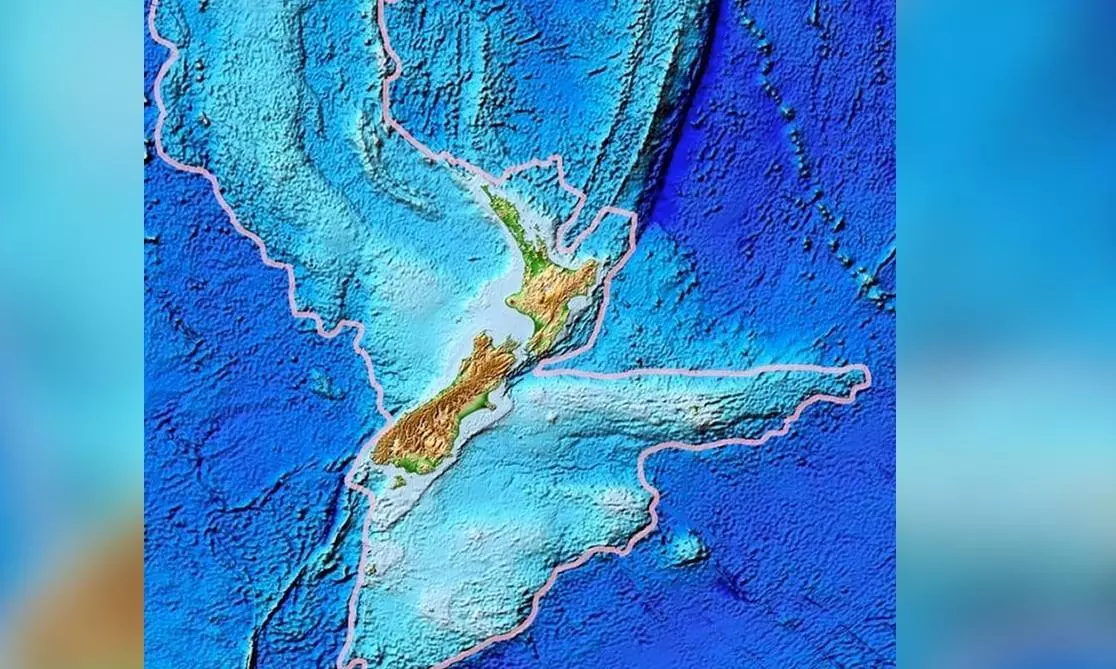
Explained: What is Zealandia and why is it in news?
What have scientists and researchers uncovered in their recent study about the earth's lost 8th continent?

Submerged under one to two kilometres of water in the southeast of Australia in the Pacific Ocean lies the earth’s 8th long-lost continent.
Scientists who had been predicting the existence of another continent for a long time have been finally validated when research in 2017 showed that the planet indeed had an 8th continent. This continent had been missing for nearly 375 years before it was discovered, with most of it, submerged under water. Akin to New Zealand in its island-like characteristics, it was referred to as Zealandia.
So, why is the planet's 8th continent - Zealandia - in the news now?
Firstly, when and how did Zealandia form?
Zealandia was originally part of the ancient supercontinent Gondwana, dating back 1 billion to 542 million years ago. Sometime, probably, 83 million years ago, the supercontinent Gondwana started being pulled apart leading to the emergence of the present-day continents.
As Gondwana split up, the world's smallest, thinnest and youngest continent struck out on its own. It's thought that all or part of Zealandia may have existed as an island for a while. But, then around 25 million years ago, it sank and disappeared beneath the ocean.
How much of Zealandia is under the sea?
It is 94 per cent under the sea and the remaining six per cent is what we know as New Zealand and neighbouring islands, says a report in Down To Earth.
How did scientists discover Zealandia?
The first real clues that New Zealand may actually be just a small visible part of a massive hidden landmass came in 2002 when scientists studied the depth of bodies of water to analyse the region. Then in 2017, geologists and seismologists put several pieces of evidence together, including data about the kinds of rocks it contains and its relative thickness – oceanic plates tend to be thinner – to propose that this is indeed a new continent.
And that it is not a mere continental fragment or microcontinent as it was first believed to be, but a real continent with 95 per cent of it submerged underwater.
What have latest studies on Zealandia shown?
It has always been tough to map Zealandia since most of it is under water. In a new effort, the research team worked on the existing maps of Zealandia after studying a collection of rocks and sediment samples from the ocean bed.
In September, an international team of researchers released the most detailed maps of Zealandia's underwater region and its geology. A study of rock patterns revealed unexpected tectonic plate activity near the Campbell Plateau, an underwater plateau off New Zealand's west coast. Other geological features have also been revealed.
According to researchers, around 83 million years ago, Zealandia/West Antarctica and Antarctica/Australia cracked, permitting the Tasman Sea to flood in.
Subsequently, approximately 79 million years ago during the Late Cretaceous period, Zealandia and West Antarctica separated, forming the Pacific Ocean.
What is most important finding in this study?
The study shows that Zealandia is also substantially larger than the Arabian Peninsula, the world’s largest peninsula, and the Indian subcontinent. Due to various geological considerations, such as crustal thickness and density, some geologists from New Zealand and Australia have concluded that Zealandia fulfills all the requirements to be considered as a ‘continent’ rather than a microcontinent.
According to The Geological Society of America, Zealandia illustrates that the large and the obvious in natural science can be overlooked. Based on various lines of geological and geophysical evidence, particularly those accumulated in the last two decades, it is argued that Zealandia is not a collection of partly submerged continental fragments but is a coherent 4.9 M square km continent.
What does this finding mean?
The importance of Zealandia lies in the fact that it is the youngest, thinnest and most submerged. But, importantly it is not shredded into microcontinents, and so becomes a new and useful continental end member, say experts.
The scientific value of classifying Zealandia as a continent is much more than just an extra name on a list. That a continent can be so submerged yet unfragmented makes it a useful and thought-provoking geodynamic end member in exploring the cohesion and breakup of continental crust, said The Geological Society of America.
But, there are still more mysteries to be unravelled about this hidden continent.

